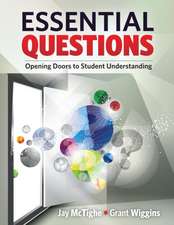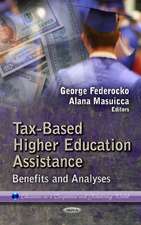Equality of Educational Opportunity and Knowledgeable Human Capital
Autor Erwin V. Johanningmeieren Limba Engleză Paperback – 4 oct 2009
| Toate formatele și edițiile | Preț | Express |
|---|---|---|
| Paperback (1) | 386.30 lei 6-8 săpt. | |
| Information Age Publishing – 4 oct 2009 | 386.30 lei 6-8 săpt. | |
| Hardback (1) | 583.53 lei 6-8 săpt. | |
| Information Age Publishing – 4 oct 2009 | 583.53 lei 6-8 săpt. |
Preț: 386.30 lei
Nou
Puncte Express: 579
Preț estimativ în valută:
73.92€ • 80.54$ • 62.29£
73.92€ • 80.54$ • 62.29£
Carte tipărită la comandă
Livrare economică 23 aprilie-07 mai
Preluare comenzi: 021 569.72.76
Specificații
ISBN-13: 9781607522317
ISBN-10: 1607522314
Pagini: 190
Dimensiuni: 156 x 234 x 10 mm
Greutate: 0.27 kg
Ediția:New.
Editura: Information Age Publishing
ISBN-10: 1607522314
Pagini: 190
Dimensiuni: 156 x 234 x 10 mm
Greutate: 0.27 kg
Ediția:New.
Editura: Information Age Publishing









